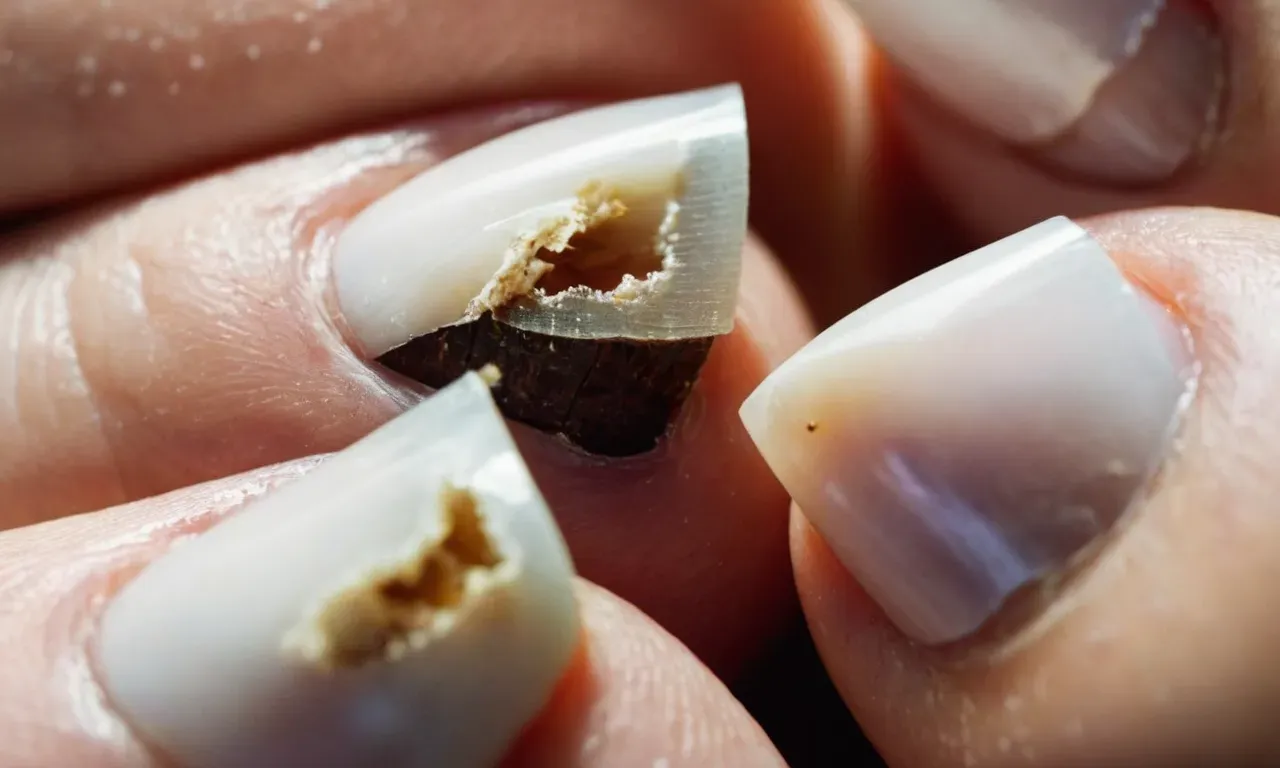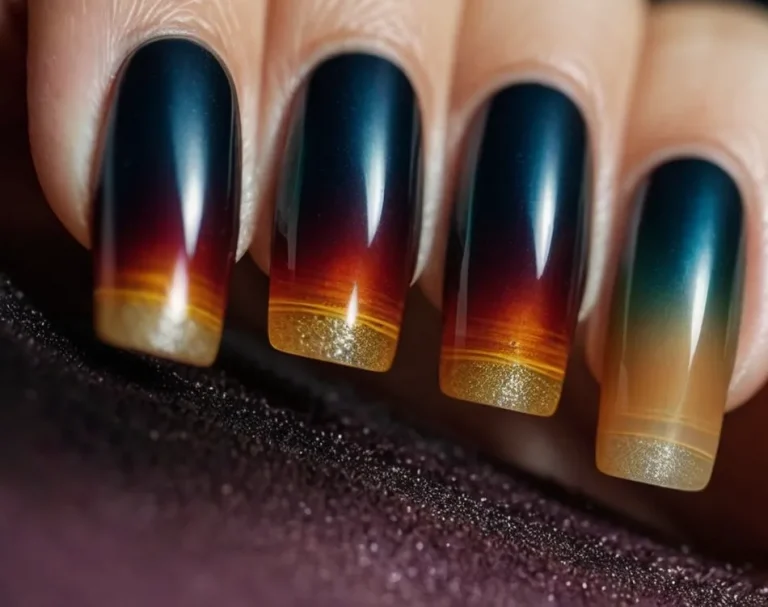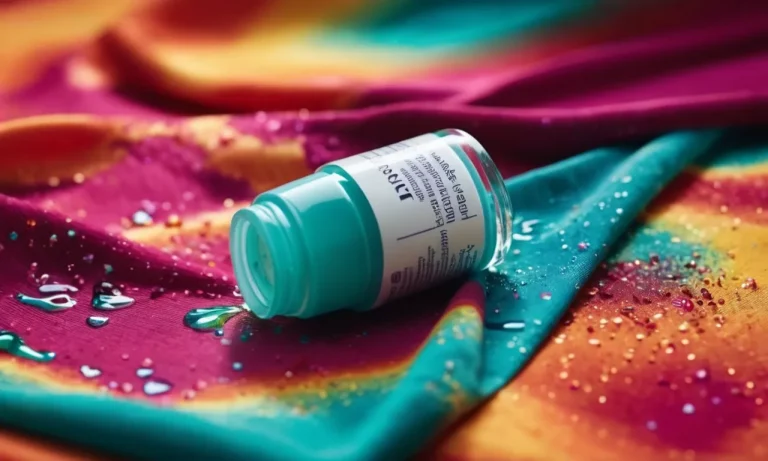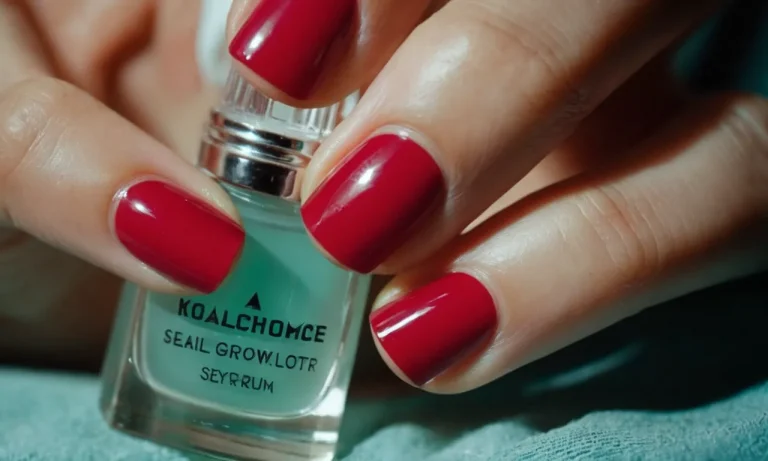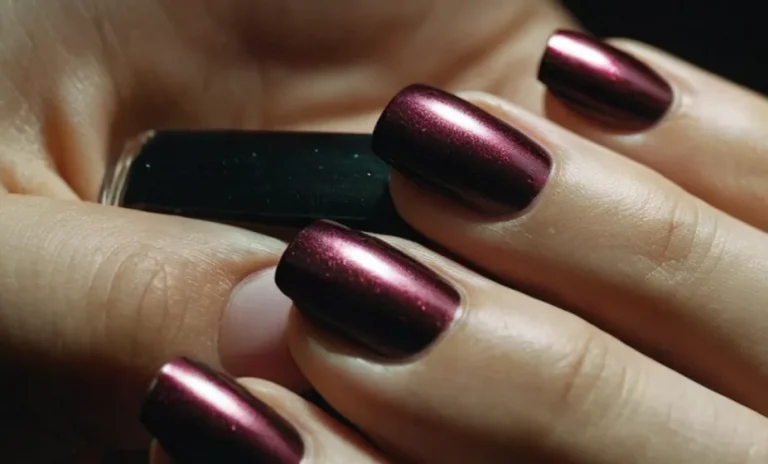Why Is My Toenail Peeling? A Comprehensive Guide
If you’ve noticed your toenails starting to peel or flake off, you’re not alone. Peeling toenails are a common problem that can happen for a variety of reasons.
If you’re short on time, here’s a quick answer to your question: Toenails can peel due to trauma, fungal infections, psoriasis, vitamin deficiencies, and other medical conditions. Keeping feet clean and dry, trimming nails properly, and wearing well-fitted shoes can help prevent peeling.
In this comprehensive guide, we’ll explore all the potential causes of peeling toenails and how to treat them. We’ll also provide tips on prevention so your nails can grow back healthy and strong.
What Causes Toenails to Peel?
Trauma and Injury
Toenails can peel due to physical trauma, like stubbing your toe or dropping something on it. Injuries can damage the nail bed and affect nail growth, leading to peeling. Using improper toenail cutting techniques can also cause injury and peeling.
It’s best to trim toenails straight across to avoid ingrown nails or tearing.
Fungal Infections
Fungal infections like athlete’s foot and toenail fungus (onychomycosis) can get underneath the nail and lift it from the nail bed, causing peeling. An estimated 10% of the population suffers from toenail fungus.
Some people are more prone due to factors like sweaty feet, poor circulation, walking barefoot in damp areas, or a weak immune system.
Psoriasis
The autoimmune condition psoriasis can affect fingernails and toenails, causing pitting, abnormal nail growth and peeling. Psoriasis occurs when skin cells multiply too quickly. About 50% of people with psoriasis develop nail psoriasis.
Genetics, skin injuries, stress, and infections can trigger psoriatic toenail changes.
Vitamin Deficiencies
Certain vitamin deficiencies are linked to nail abnormalities. Lack of vitamins A, C, D or E, iron, zinc and biotin can contribute to dry, brittle nails that peel. In one study, 63% of people with nail shedding and breakage had a vitamin D deficiency.
Consuming a balanced diet with these key nutrients can improve nail health.
Medical Conditions
Underlying medical issues like anemia, thyroid disease, eczema, leukemia and skin cancer can also cause nail problems. Diabetes in particular affects circulation and nerve supply in the extremities, which impacts toenail growth and condition.
Managing these diseases can alleviate related nail symptoms.
Aging
As we age, toenails commonly become thicker and more brittle, making them prone to cracking and peeling, especially at the edges and tips. Nails may also grow more slowly and lose their luster. Keeping nails properly trimmed and moisturized can minimize age-related peeling.
Harsh Products and Chemicals
| Harsh Nail Products | Household Chemicals |
| – Acetone nail polish remover | – Bleach |
| – Acrylic/dip powders | – Soaps and detergents |
| – Cuticle removers | – Cleaning solutions with strong chemicals |
Using harsh nail products or exposing nails to household chemicals can dry them out, making the layers separate and peel. It’s best to use moisturizing nail polish removers without acetone and handle household chemicals with gloves.
Signs Your Toenails Are Peeling
Flaking or Peeling Layers
One of the most common signs of peeling toenails is when layers of the nail start to flake or peel off. This can happen at the tip of the nail or over the entire surface. As new nail grows in underneath, pieces of the old nail will detach and fall off.
Mild peeling is normal over time as the nails grow, but excessive or persistent flaking can indicate an underlying problem.
Discoloration or Thickening
Nail discoloration and thickening can also be signs of a peeling toenail. The nails may turn yellow, brown, or even black. They may also become thicker or warped in shape. This often happens when there is damage to the nail bed, allowing discolored keratin to build up underneath the nail plate.
Fungal infections are a common cause of discolored, thickened nails that are prone to peeling.
Crumbling Nails
Some people experience nails that start to crumble or fray at the edges. This can eventually lead to peeling of layers from the tip or sides of the nail. Crumbling nails are often a result of excessive moisture or maceration, which causes the nails to soften and gradually fall apart.
Harsh, drying chemicals can also damage nails and make them more likely to crumble.
Pain or Discomfort
You may feel pain or discomfort associated with peeling nails. As pieces of nail detach, it can tug on the nail bed and cause pain. If the nail is infected or inflamed, there may also be swelling, redness, and tenderness around the toenail.
Bacterial infections can be associated with oozing, foul-smelling discharge. See your doctor promptly if a peeling nail is accompanied by severe pain or infection signs.
When to See a Doctor
Persistent Peeling
If your toenails are persistently peeling over a long period of time, it’s best to consult a dermatologist. Chronic nail peeling can be a sign of an underlying condition like psoriasis, eczema, or fungal infection. Getting the right diagnosis and treatment is key.
Discolored or Distorted Nails
Nail discoloration or strange distortions in shape can result from injury, but may also indicate a more serious issue like melanoma. Schedule an appointment with your doctor right away if you notice any unusual changes in your nails, especially involving dark streaks, bands, or dots.
Early evaluation is critical.
Pain, Swelling or Pus
Experiencing pain, swelling, redness, or pus around the toenail warrants medical care. These can be signs of a bacterial or fungal nail infection that requires medication to clear up. Left untreated, the infection could worsen and even spread. It’s important to get checked out promptly.
Diabetes or Poor Circulation
People with diabetes or poor circulation in the lower extremities are more prone to nail problems. If you have either condition and notice increased toenail peeling or other issues, see your doctor to rule out any complications. Proper foot care is vital for avoiding further problems.
Weakened Immune System
Those with weakened immune systems due to illness or medical treatments like chemotherapy are also at increased risk for fungal and bacterial nail infections. Persistent nail peeling or discoloration may be the first clue.
Having your doctor evaluate your nails and prescribe treatment if needed can prevent more serious complications.
Home Treatments and Prevention
Keep Feet Clean and Dry
Keeping your feet clean and dry is crucial to avoid toenail fungus that can lead to peeling. When feet stay damp for too long, it creates the optimal environment for fungus to thrive. Be sure to scrub feet daily with gentle soap and dry thoroughly, especially between the toes.
It’s also wise to avoid walking barefoot in public places like pools or locker rooms, where fungal spores may lurk.
Moisturize Nails and Cuticles
Using a moisturizing nail oil daily will keep nails and cuticles supple, preventing painful cracks or lifts that allow fungus and bacteria to enter. Apply the oil along the nail edges and under tips. Massage it into cuticles gently with a cotton swab. Jojoba, coconut, and olive oil nourish well.
Avoid harsh nail polish removers, instead use gentle acetone-free formulas.
Trim Nails Properly
Trim nails straight across, never rounded at edges or too short. Overly short nails put stress on the nail bed. Use sharp manicure scissors or clippers only. No ripping off hangnails, which risks infection. File nails gently with an emery board to smooth edges. Don’t share used nail tools with others.
Avoid Damaging Nails
Prevent injury to nails that allow fungus or bacteria to take hold. Don’t crack or pick at nails. Limit gel manicures or acrylics that thin nails over time. If a nail splits or starts lifting from the bed, apply an antiseptic.
Consider athlete’s foot creams containing clotrimazole or terbinafine to prevent fungal spread to nails.
Wear Well-Fitted Shoes
Choose leather shoes and socks that keep feet cool and dry. Change socks daily. Avoid prolonged dampness inside rubber boots or tight pumps that cause pressure or friction against toenails. Ill-fitting shoes are a common culprit of bruised or damaged nails vulnerable to infection.
Treat Underlying Conditions
Manage any medical issues like diabetes or psoriasis that make toenails more prone to thickening, pitting, discoloration or fungus. Follow doctor’s treatment plans for these chronic conditions that impact nail health.
Controlling blood sugar and using medicated creams can greatly improve peeling nails.
Take Vitamins
Certain vitamin deficiencies are linked with nail abnormalities like ridges, white spots and brittleness. Taking a daily multivitamin ensures you get enough zinc, iron, biotin and other nutrients vital for keratin production and strong nails. Ask your doctor to check levels if nails seem very weak.
| Biotin | Promotes healthy nails, may help increase thickness |
| Vitamin C | Forms collagen needed for nail growth and strength |
Use Antifungal Creams
For fungal toenail infections causing peelng, several effective OTC topical treatments can penetrate nails to fight fungus when applied diligently. Look for clotrimazole, terbinafine or butenafine in these products.
It may take 3 months for an antifungal cream to fully clear infection and allow new, healthy nail growth. Oral prescription meds are also available for more stubborn fungus cases.
Medical Treatments for Peeling Toenails
Medications
Oral and topical medications can help treat peeling toenails caused by fungal infections or psoriasis. Antifungal medications like terbinafine or itraconazole may be prescribed for 6-12 weeks to clear fungal toenail infections.
Corticosteroids, vitamin D analogues, and retinoids can help reduce inflammation and skin cell overgrowth in psoriasis. Biologics that target parts of the immune system may also be used for moderate to severe cases.
Always finish the full course of any prescribed medications, even if symptoms improve, to fully eliminate infections.
Debridement
In debridement, a podiatrist or dermatologist trims off the thickened, brittle parts of the toenail to encourage new, healthy growth. This also removes areas infected with fungus. The procedure is usually painless due to numbing medication. However, it does not prevent future toenail problems.
Debridement may need to be repeated every few months until the nail grows back normally.
Surgery
For recurring or severe toenail issues, permanent nail removal surgery may be performed. This is called a partial or full matricectomy. The procedure involves numbing the toe area, then using surgical instruments to destroy part or all of the nail matrix (root) so that portion of the nail does not regrow.
Recovery takes a few weeks. Though rare, possible side effects include infection, scarring, regrowth of nail fragments, and toe stiffness or pain with weather changes.
Laser Therapy
Laser treatments can selectively target and eliminate fungus or excessive skin tissue causing peeling toenails, without damaging healthy areas. The PinPointe FootLaser uses a 1064nm Nd:YAG laser, while the Q-Clear system uses high intensity 264nm UV light. Each session lasts 30-60 minutes.
Most patients need 2-4 treatments for full results. Potential side effects include redness, swelling, blistering, or darkening of skin in treated areas. Very few patients experience lasting effects. Lasers provide lasting solutions with excellent success rates for stubborn fungal and psoriasis-related toenail issues.
Photodynamic Therapy
Photodynamic therapy combines a topical photosensitizing agent with specialized lamps emitting light at specific wavelengths matched to the agent. The photosensitizer is applied and allowed to absorb into affected nails, then the lamps activate it, creating compounds that selectively destroy fungi, viruses, and other pathogens.
Skin stays protected. Sessions are conducted in a podiatry office and may involve wearing protective glasses. Most patients need 2-4 treatments over several months to fully resolve fungal infections and related nail conditions. Photodynamic therapy also prevents recurrence.
Side effects are typically mild including redness, irritation, or sensitivity to light lasting a few days. Over 85% of patients see excellent long-term improvements with this innovative treatment.
Conclusion
In conclusion, there are many potential causes behind peeling toenails, ranging from fungal infections to vitamin deficiencies. While the peeling can be annoying or embarrassing, there are ways to treat and prevent it through proper foot hygiene, moisture, nail care, and addressing any underlying medical issues.
If home treatments don’t resolve your peeling nails, see a podiatrist or dermatologist to discuss medical options. With the right care, your toenails should be able to grow back healthy and flaky-free.

